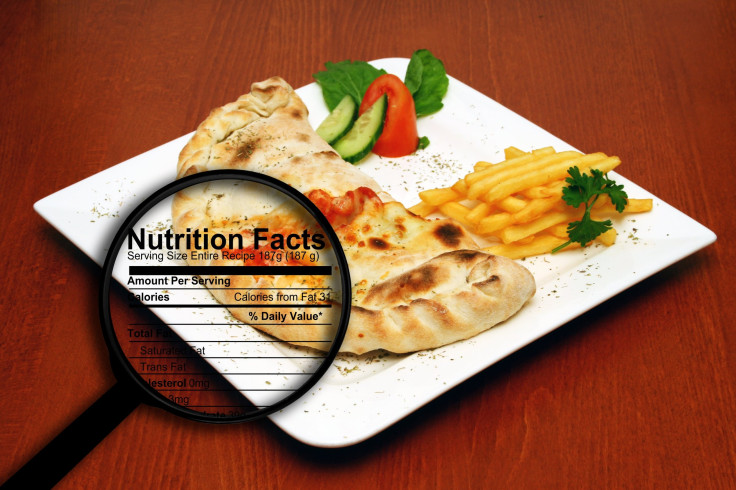FDA Mandates Calorie Counts For Menus: Is It Enough To Slow The Obesity Epidemic?

Calorie counts have earned themselves a permanent spot on American chain restaurant menus and menu boards thanks to an overwhelming obesity crisis desperate for solutions. The Food and Drug Administration (FDA) ruled Tuesday all chain restaurants and large vending machines must label their foods with calories counts. Many health experts believe that the requirement will help combat the country’s obesity epidemic by using the persuasion of transparency, but some may not agree.
"Obesity is a national epidemic that affects millions of Americans," FDA Commissioner Margaret Hamburg told reporters on a conference call. "Strikingly, Americans eat and drink about a third of their calories away from home."
To be exact, there are 78.6 million obese adults in the U.S. and millions more children. Congress recognized a need for some sort of action and tried to appease concerned consumers and health advocates by passing a national law in March of 2010. The law requires restaurants with 20 or more outlets to list the menu items’ calories. Congress asked the FDA to write and reinforce the requirements. Four years later, the FDA pulled off the transparency stunt, but it’s doubtful it’s going to solve the obesity epidemic alone. Pulling the curtain up and revealing to the world how bad the food is that you’re eating will only work for those who actually care about what they’re eating.
The ruling will give restaurants a year to comply, while vending machines will have two years to make sure calories are listed. Movie theaters, amusement parks, and certain places with alcoholic beverages will also be under the gun. The most confusing part of the law is the parameters grocery stores must stay in line with.
“The grocery store is a confusing issue because they sometimes acts like a restaurant,” FDA Senior Advisor for Nutrition Science and Policy Jessica Leighton said to reporters on a conference call. “A good rule of thumb is to consider if it is ready to eat for immediate consumption.”
But Will It Work?
It all depends on who the menus are working on. For the already health-conscience consumer, it may change his or her mind from choosing the 900-calorie meal to the 500-calorie meal. But the consumer may have changed his mind because he's already conditioned to choose the healthier option, and now these calorie reveals are another helpful way for him to do so. Will it help the consumers who are sick with type 2 diabetes, overweight, or obese to change their minds about their meal choices? That’s the real test.
“We’re very pleased to provide transparency in a consistent and easy to understand manner,” Hamburg said. “The FDA has worked hard to make sure these rules are easy to use, realistic, and consistent, so consumers can make informed choices about the foods they eat.”
A 2013 analysis published in the Journal of Public Health may beg to differ. The study’s researchers found even though millions of people are already exposed to the calorie breakdowns at fast food restaurant menus, only 36 percent of the people actually read the labels. The catch is, most of those people were infrequent visitors. The people who are constantly eating at fast food restaurants three or more times a week pay no attention to the calories listed, which indicates that the people who need to pay attention to calories simply aren’t.
“Obesity is a huge problem, and a big cause is caloric intake,” Leighton said. “It’s not unreasonable to think providing calorie information will help consumers make more informed decisions.”
Transparency is a great place to start, but the effort shouldn’t end there. The rates of obesity are climbing, and not just in America. Will numbers work in place for lack of knowledge surrounding calories, fat, salt, sugar, and food consumption in general? It’ll be a waiting game to see how consumers react to calorie listings across the nation, and to find out if calories were even the problem in the first place.
Published by Medicaldaily.com



























